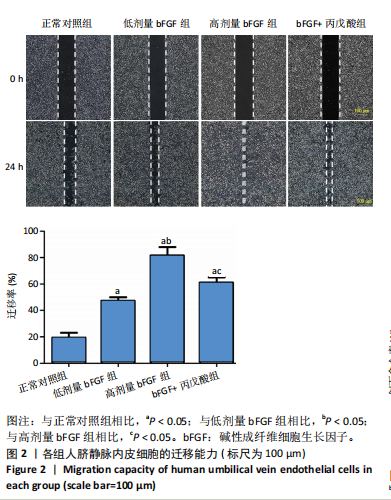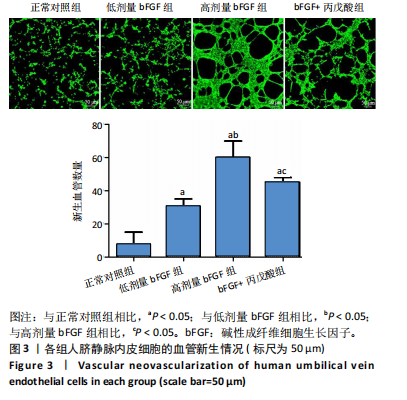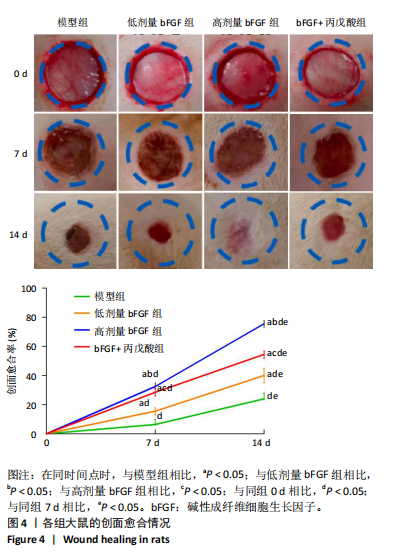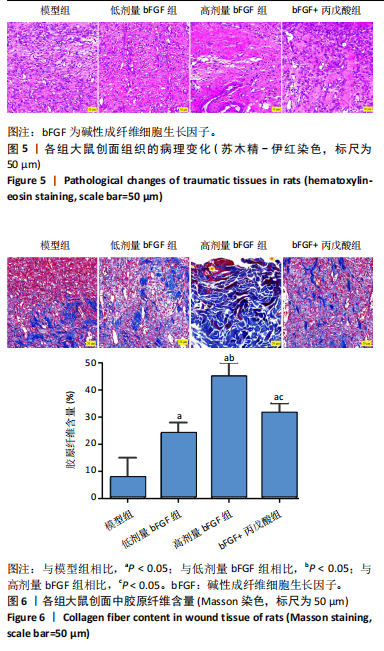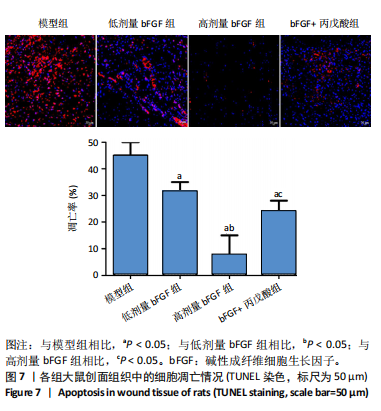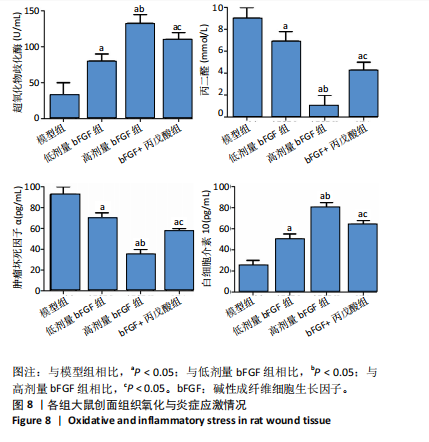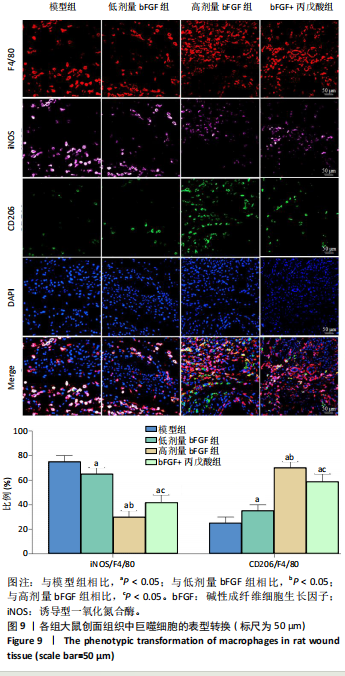[1] AFSHAR A, KHORADMEHR A, NOWZARI F, et al. Tissue Extract from Brittle Star Undergoing Arm Regeneration Promotes Wound Healing in Rat. Mar Drugs. 2023;21(7):381.
[2] OTAKE H, MANO Y, DEGUCHI S, et al. Effect of Ointment Base on the Skin Wound-Healing Deficits in Streptozotocin-Induced Diabetic Rat. Biol Pharm Bull. 2023;46(5):707-712.
[3] LI D, ZHANG C, GAO Z, et al. Curcumin-Loaded Macrophage-Derived Exosomes Effectively Improve Wound Healing. Mol Pharm. 2023;20(9): 4453-4467.
[4] ALI S, ISHTEYAQUE S, KHAN F, et al. Accelerative Wound-Healing Effect of Aqueous Anthocephalus Cadamba Leaf Extract in a Diabetic Rat Model. Int J Low Extrem Wounds. 2023;22(2):409-417.
[5] 李凤菊,朱玉霞,侯堆鹏,等.德莫林皮肤创面无机诱导活性敷料联合重组牛碱性成纤维细胞生长因子治疗放射性皮肤损伤的临床效果分析[J].中国医药,2023,18(10):1537-1541.
[6] MOUNIR R, ALSHAREEF WA, EL GEBALY EA, et al. Unlocking the Power of Onion Peel Extracts: Antimicrobial and Anti-Inflammatory Effects Improve Wound Healing through Repressing Notch-1/NLRP3/Caspase-1 Signaling. Pharmaceuticals (Basel). 2023;16(10):1379.
[7] DU P, DIAO L, LU Y, et al. Heparin-based sericin hydrogel-encapsulated basic fibroblast growth factor for in vitro and in vivo skin repair. Heliyon. 2023;9(3):e13554.
[8] 李锐,邹双,高征征,等.碱性成纤维细胞生长因子团聚体对糖尿病大鼠外周神经病变的治疗作用[J].中国药理学与毒理学杂志, 2017,31(4):295-302.
[9] 李官虎,郎庆旭,刘纯岩,等.丙戊酸联合X射线照射对乳腺癌MDA-MB-231细胞增殖的抑制作用及其机制[J].吉林大学学报(医学版),2022,48(3):622-629.
[10] VOLKOVA MV, BOYARINTSEV VV, TROFIMENKO AV, et al. Local injection of bone-marrow derived mesenchymal stromal cells alters a molecular expression profile of a contact frostbite injury wound and improves healing in a rat model. Burns. 2023;49(2):432-443.
[11] ZHAO Q, XU J, HAN X, et al. Growth differentiation factor 10 induces angiogenesis to promote wound healing in rats with diabetic foot ulcers by activating TGF-β1/Smad3 signaling pathway. Front Endocrinol (Lausanne). 2023;13:1013018.
[12] KHAN A, ANDLEEB A, AZAM M, et al. Aloe vera and ofloxacin incorporated chitosan hydrogels show antibacterial activity, stimulate angiogenesis and accelerate wound healing in full thickness rat model. J Biomed Mater Res B Appl Biomater. 2023;111(2):331-342.
[13] LUO L, AN Y, GENG K, et al. High glucose-induced endothelial STING activation inhibits diabetic wound healing through impairment of angiogenesis. Biochem Biophys Res Commun. 2023;668:82-89.
[14] EL-AASR M, NOHARA T, IKEDA T, et al. LC-MS/MS metabolomics profiling of Glechoma hederacea L. methanolic extract; in vitro antimicrobial and in vivo with in silico wound healing studies on Staphylococcus aureus infected rat skin wound. Nat Prod Res. 2023; 37(10):1730-1734.
[15] TINGTING S, XINYUE F, TIANTIAN Y, et al. Comparison of the effects of negative pressure wound therapy and negative pressure wound therapy with instillation on wound healing in a porcine model. Front Surg. 2023;10:1080838.
[16] XU TY, QING SL, ZHAO JX, et al. Metrnl deficiency retards skin wound healing in mice by inhibiting AKT/eNOS signaling and angiogenesis. Acta Pharmacol Sin. 2023;44(9):1790-1800.
[17] SULIMAN MAASHI M, FELEMBAN SG, ALMASMOUM HA, et al. Nicaraven-loaded electrospun wound dressings promote diabetic wound healing via proangiogenic and immunomodulatory functions: a preclinical investigation. Drug Deliv Transl Res. 2023;13(1):222-236.
[18] ZHOU J, XIA K, LI Y, et al. Zwitterionic nanocapsule-based wound dressing with the function of gradient release of multi-drugs for efficient wound healing. J Mater Chem B. 2023;11(30):7197-7208.
[19] 徐捷,金利泰,王涛,等.紫草素通过上调C-X-C基序趋化因子受体4促进细胞自噬加快糖尿病创面愈合的机制研究[J].中华糖尿病杂志,2024,16(1):84-91.
[20] 田淑芳,顾帅鹏,赵炎,等.高压电烧伤致大面积头皮缺损、颅骨外露创面修复1例[J].中华整形外科杂志,2023,39(5):576-579.
[21] 韦积华,罗富强,谢康麒,等.舒洛地特对糖尿病足溃疡大鼠HIF-1α/GPER/VEGF通路及创面愈合的影响[J].中国老年学杂志,2023, 43(5):1151-1155.
[22] 殷东京,沈国良.自体富血小板凝胶结合封闭负压引流对深Ⅱ度烧伤患者创面愈合进程及EGF、bFGF水平的影响[J].中国现代医学杂志,2023,33(8):87-92.
[23] 刘亚坤,李刚,颜娟,等.紫檀芪对糖尿病性皮肤溃疡模型大鼠创面愈合的影响及机制[J].中国药房,2023,34(16):1967-1971.
[24] 高喜翔,高明杰,谷涌泉,等.诱导多能干细胞分化的平滑肌细胞促进糖尿病鼠创面愈合的研究[J].中国实验动物学报,2023,31(7): 880-887.
[25] ZARE R, ABDOLSAMADI H, SOLEIMANI ASL S, et al. The bFGF Can Improve Angiogenesis in Oral Mucosa and Accelerate Wound Healing. Rep Biochem Mol Biol. 2023;11(4):547-552.
[26] WANG B, CHEN J, ZHANG C, et al. Biomimetic nanoparticles of platelet membranes carrying bFGF and VEGFA genes promote deep burn wound healing. Int Immunopharmacol. 2023;125(Pt A):111164.
[27] 李晓辉,黄象艳.自体富血小板血浆在慢性难愈合创面治疗中的应用进展[J].山东医药,2023,63(4):107-110.
[28] 郝治,龚海峰,刘丽梅,等.中药油剂愈溃油对大鼠糖尿病皮肤溃疡模型创面愈合及Wnt、notch通路的影响[J].四川中医,2022, 40(8):51-56.
[29] 王义,郑旸,董孟杰,等.人脂肪干细胞通过Notch信号通路促进皮肤创伤愈合的初步研究[J].口腔生物医学,2022,13(1):9-14.
[30] 宋承骏,应乐园,马柏强.姜黄素对大鼠皮肤创面愈合及血管新生的影响和作用机制[J].中国医师杂志,2023,25(2):226-231. |

